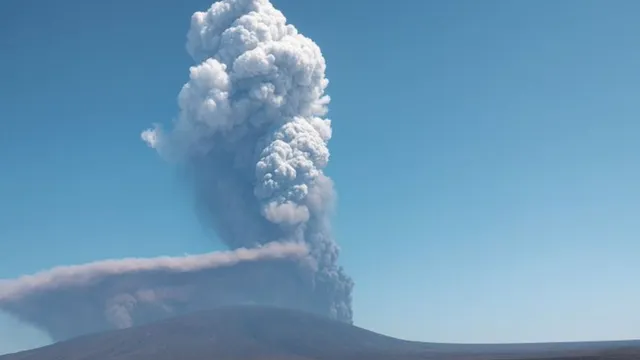- By Supratik Das
- Mon, 24 Nov 2025 02:43 PM (IST)
- Source:JND
Ethiopia volcano eruption: In an extremely rare and dramatic geological event, Ethiopia's long-silent Hayli Gubbi volcano roared back to life on Sunday, unleashing its first known eruption in nearly 10,000 years.
The sudden explosion, captured on satellite and confirmed by the Toulouse Volcanic Ash Advisory Center (VAAC), sent towering ash columns rising between 10 and 15 kilometres into the atmosphere, spreading across the Red Sea toward Oman and Yemen.
The eruption began around 8:30 a.m. UTC in Ethiopia's Afar region, one of the hottest and most inaccessible regions on the planet. Located about 15 km southeast of the very active Erta Ale volcano, Hayli Gubbi has remained geologically obscure, with no recorded eruptions in recent history.
Why This Eruption Matters
This marks one of the most significant volcanic awakenings ever recorded in East Africa. The volcano sits within the Danakil Depression, a region known for its intense heat, harsh terrain, and minimal human habitation.
Ethiopia is reporting what scientists say is its first confirmed volcanic eruption in thousands of years after the Hayli Gubbi volcano in the remote Afar region burst to life. Researchers say this marks the volcano’s first recorded activity and likely its first eruption in many… pic.twitter.com/rzhMDttAfu
— Open Source Intel (@Osint613) November 24, 2025
Initial estimates indicate that the eruption may follow a repose period as long as several millennia. Geological estimates indicate that the volcano has probably been in a dormant stage for about 10,000 years, so its re-awakening is quite unexpected and scientifically important.
Ash Cloud Visible From Space
Satellite observations showed that the dense ash plume was wind-driven west to east across the Red Sea, while international atmospheric monitoring systems detected elevated levels of sulfur dioxide, an indicator of a major eruption.
🚨 UNBELIEVABLE SATELLITE FOOTAGE
— Mossad Commentary (@MOSSADil) November 24, 2025
A massive eruption has just exploded from Ethiopia’s Hayli Gubbi volcano, the first recorded eruption in its history.
The ash plume shot 10–15 km into the air and is drifting over the Red Sea and Arabia.
Stay connected, follow @MOSSADil. pic.twitter.com/83Dz7BLQQn
Imagery shared by various Earth observation platforms revealed a sharply defined ash column rising 15km high above the arid landscape, the cloud mass spreading outward in the direction of the Arabian Peninsula. No injuries or immediate ground-level impacts have been recorded due its location.
According to researchers, the event offers a rare chance to study a volcano's awakening after thousands of years of silence in one of the least explored volcanic zones in the world. Authorities are monitoring the path the ash plume is taking over maritime and desert areas as it goes toward Yemen and Oman.
ALSO READ: Massive Eruption At Japan’s Sakurajima Volcano Spews 4,400m Ash Cloud, Disrupts Flights | VIDEO
The Hayli Gubbi eruption has quickly obtained worldwide attention, not just because of its size, but because of the remarkable geological record it may reflect-turning one of Earth's quietest volcanoes into its newest subject of scientific scrutiny.

